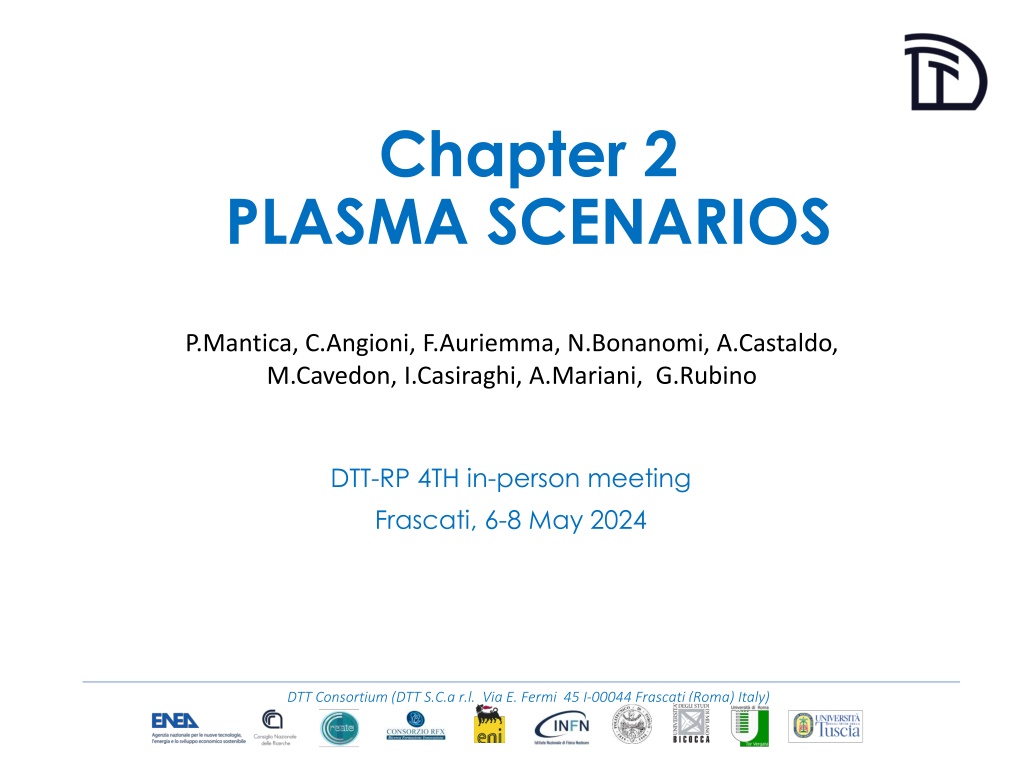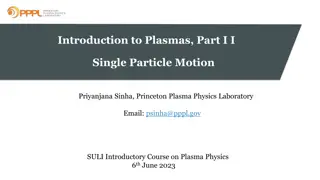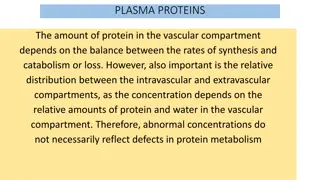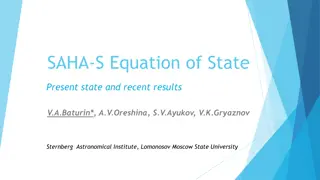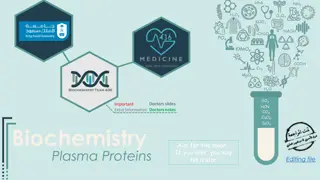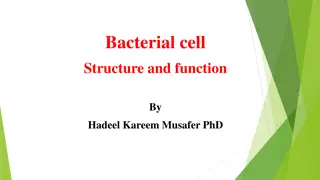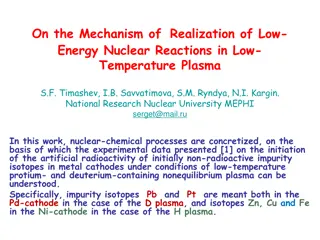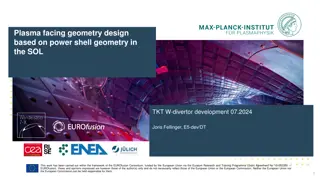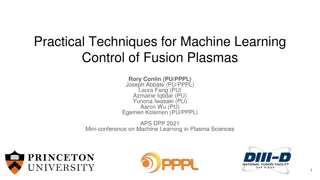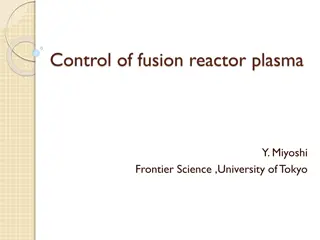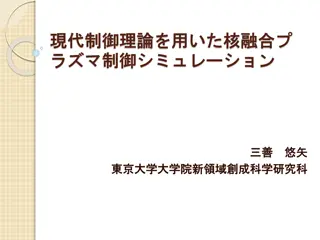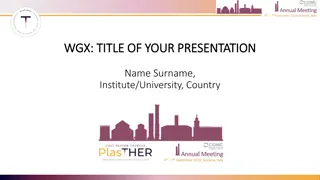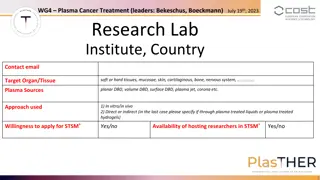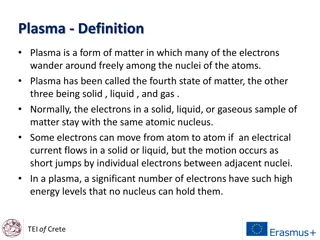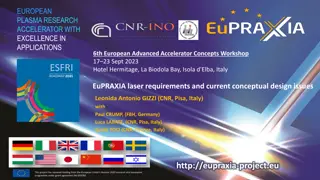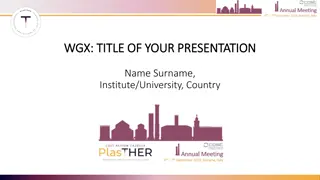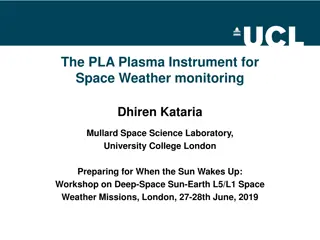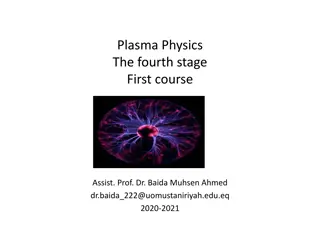PLASMA SCENARIOS
This content discusses the time sequence of DTT heating phases, explores achievable scenarios in each phase, and delves into electromagnetic constraints. It covers baseline scenarios, ELM properties, alternative scenarios, and expectations for negative triangularity scenarios.
Download Presentation

Please find below an Image/Link to download the presentation.
The content on the website is provided AS IS for your information and personal use only. It may not be sold, licensed, or shared on other websites without obtaining consent from the author.If you encounter any issues during the download, it is possible that the publisher has removed the file from their server.
You are allowed to download the files provided on this website for personal or commercial use, subject to the condition that they are used lawfully. All files are the property of their respective owners.
The content on the website is provided AS IS for your information and personal use only. It may not be sold, licensed, or shared on other websites without obtaining consent from the author.
E N D
Presentation Transcript
Chapter 2 PLASMA SCENARIOS P.Mantica, C.Angioni, F.Auriemma, N.Bonanomi, A.Castaldo, M.Cavedon, I.Casiraghi, A.Mariani, G.Rubino DTT-RP 4TH in-person meeting Frascati, 6-8 May 2024 DTT Consortium (DTT S.C.a r.l. Via E. Fermi 45 I-00044 Frascati (Roma) Italy)
INDEX 2.1 Introduction 2.2 DTT heating phases 2.3 Electromagnetic configurations achievable in DTT 2.4 Scenarios accessible in the different heating phases 2.5 Designing the full time evolution of a DTT scenario 2.5.1 Available electromagnetic flux swing 2.5.2 Break-down 2.5.3 Ip ramp-up, flat-top and Ip ramp-down 2.6 Time dependent simulations of DTT baseline scenarios using first principle transport models 2.6.1 Simulation methodology 2.6.2 Scenario E SN baseline 2.6.3 Scenario A SN baseline moved to Appendix C 2.6.4 2.6.5 Scenario E half field/half current high N 2.6.6 Comparison of DTT flat-top parameters with ITER and DEMO Scenario C SN baseline Plasma scenarios P.Mantica DTT-RP 4th in-person meeting
INDEX 2.7 ELMs in DTT scenarios and small ELMs/ ELM-free scenarios 2.7.1 ELMs in DTT full power baseline H-mode 2.7.2 EDA H-mode regime 2.7.4 QCE regime 2.7.5 XPR-CRD scenarios 2.7.6 I-mode regime 2.7.7 QH and WPQH 2.8 Alternative scenarios to H-mode baseline 2.8.1 Hybrid scenarios 2.8.2 Advanced scenarios 2.9 Negative triangularity scenarios 2.10 References Total pages : 21 (+8 appendix) Plasma scenarios P.Mantica DTT-RP 4th in-person meeting
Rationale of Ch.2 Recalls the time sequence of DTT heating phases and defines the nomenclature of the scenarios achievable in each phase, identifying possible regimes of operation Discusses how to build the various phases of a plasma discharge, consistently with electromagnetic constraints (METIS) Shows the time dependent 4 baseline scenarios E, A, C, E half BT simulated with ASTRA and first principle transport models Shows first calculations of ELM properties and discusses achievability of small ELMs/ELM free scenarios Discusses the possibility of investigating alternative scenarios to baseline Discussed expectations for negative triangularity scenarios Plasma scenarios P.Mantica DTT-RP 3rd in-person meeting
New subsections Advanced scenarios QH, WPQH Advanced tokamak scenarios, with high fractions of non-inductive current, can be achieved at half BTand low Ip. In DTT a standard QH is probably impossible to achieve, due to the required high rotation. 0D estimates conservatively assuming H = 1, with stored energy provided by the average between the IPB98(y,2) and the ITPA20-IL scaling laws. ICD[kA] = 100 PCD/ nel. A WPQH may be achievable at very small NBI torque. The coherent EHOs that usually regulate the QH edge disappear and a rapid increase in the pedestal pressure height and width occurs. At 1.5 MA and fGW~0.5 fully non-inductive operation should be possible. Adding core ECRH improves the WPQH performance.
Headlines Headline Priority ITER DEMO Headline contents number (+, ++, +++) Construction Phase 2022-2029 +++ C.2.1 Definition of the central solenoid desired capabilities ++ C.2.2 Carry out integrated modelling of scenarios alternative to baseline H-mode * * Phase 1 2029-2034 1.2.1 Development of baseline L-mode and H-mode scenarios A, B, C in SN or XD divertor configuration +++ * * 1.2.2 Development of Negative Triangularity scenarios +++ * 1.2.3 Development of Hybrid scenarios at half power ++ * * 1.2.4 Development of high bNAT scenarios at half field, half power ++ * * 1.2.5 First studies of small/no ELMs regimes ++ * * Phase 2 2034-2038 2.2.1 Improvement of all phase 1 scenarios at higher power +++ * * 2.2.2 Development of small/no ELMs scenarios +++ * * Phase 3 2038- 3.2.1 Optimisation of all phase 1 and 2 scenarios at full power * * +++ 3.2.2 Optimisation of small/no ELMs scenarios at full power +++ * *
How to develop the content of the chapter for the next versions - only simulations for SN baseline scenarios have been made so far - present plan is to continue work on NT scenarios and try Hybrid scenarios - however may be priority to be given to AT scenarios doable in phase A or B? Ideas about the follow-up of the DTT-RP activity (work method, proposals of experiments on other tokamaks, code and simulation developments etc.) - more substantial involvement of people in EU outside Italy, but funding is scarce also for present team, difficult to ask for voluntary work - collaborations are being made with China, South-Korea, USA: how to involve in RP? - code and simulation development: make use of progress made in EUROfusion on integrated modelling. More work on IMAS and simulation database should be done within DTT.
Discussion Mismatch found regarding NT configurations described in SOL chapter: SOL reverse BT suggested as the only viable (why? It could remain L also in forward BT) PLS forward BT used (reverse not advisable due to NBI orbit losses? Do we need to reverse also Ip?) Others? Plasma scenarios P.Mantica DTT-RP 3rd in-person meeting
